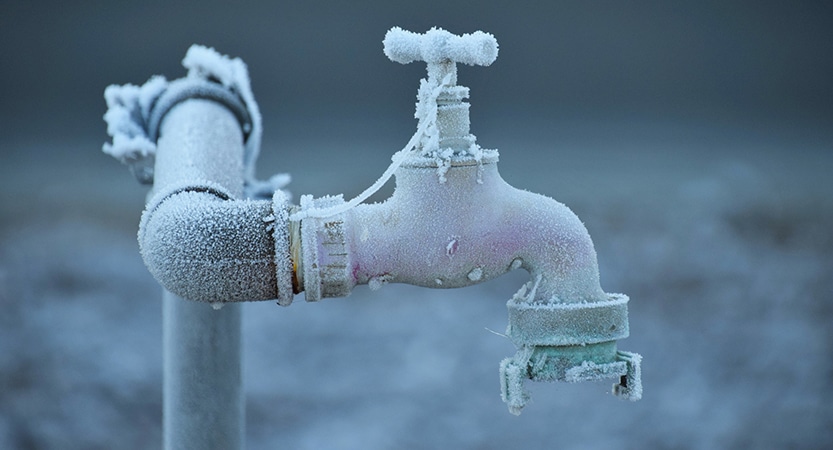What're your thoughts and feelings about How To Avoid Freezing Pipes?

Cold weather can damage your pipes, specifically by freezing pipelines. Right here's exactly how to avoid it from happening and what to do if it does.
Introduction
As temperatures decrease, the risk of icy pipes boosts, possibly bring about costly fixings and water damage. Comprehending exactly how to avoid frozen pipes is vital for homeowners in cool environments.
Prevention Tips
Protecting prone pipes
Wrap pipes in insulation sleeves or use warmth tape to protect them from freezing temperatures. Focus on pipes in unheated or external areas of the home.
Heating strategies
Maintain indoor areas adequately heated up, particularly areas with pipes. Open up cabinet doors to enable cozy air to distribute around pipes under sinks.
Just how to identify icy pipelines
Try to find reduced water circulation from taps, unusual odors or noises from pipes, and noticeable frost on subjected pipelines.
Long-Term Solutions
Architectural modifications
Think about rerouting pipes far from outside wall surfaces or unheated areas. Add additional insulation to attics, basements, and crawl spaces.
Updating insulation
Buy high-grade insulation for pipes, attics, and wall surfaces. Proper insulation helps maintain regular temperatures and reduces the threat of frozen pipelines.
Safeguarding Outside Pipes
Yard pipes and outdoor faucets
Disconnect and drain pipes garden pipes before winter season. Mount frost-proof spigots or cover exterior taps with insulated caps.
Recognizing Icy Pipes
What causes pipes to ice up?
Pipelines ice up when exposed to temperature levels below 32 ° F (0 ° C) for extended periods. As water inside the pipes freezes, it increases, taxing the pipeline wall surfaces and potentially triggering them to rupture.
Dangers and problems
Frozen pipelines can result in supply of water disturbances, residential property damage, and costly repairs. Ruptured pipelines can flooding homes and cause comprehensive architectural damages.
Signs of Frozen Pipes
Recognizing frozen pipelines early can stop them from bursting.
What to Do If Your Pipes Freeze
Immediate actions to take
If you think frozen pipes, keep faucets open up to eliminate pressure as the ice thaws. Use a hairdryer or towels taken in warm water to thaw pipes gradually.
Conclusion
Avoiding frozen pipelines needs positive procedures and quick feedbacks. By comprehending the reasons, indications, and preventive measures, house owners can secure their plumbing throughout cold weather.
5 Ways to Prevent Frozen Pipes
Drain Outdoor Faucets and Disconnect Hoses
First, close the shut-off valve that controls the flow of water in the pipe to your outdoor faucet. Then, head outside to disconnect and drain your hose and open the outdoor faucet to allow the water to completely drain out of the line. Turn off the faucet when done. Finally, head back to the shut-off valve and drain the remaining water inside the pipe into a bucket or container. Additionally, if you have a home irrigation system, you should consider hiring an expert to clear the system of water each year.
Insulate Pipes
One of the best and most cost-effective methods for preventing frozen water pipes is to wrap your pipes with insulation. This is especially important for areas in your home that aren’t exposed to heat, such as an attic. We suggest using foam sleeves, which can typically be found at your local hardware store.
Keep Heat Running at 65
Your pipes are located inside your walls, and the temperature there is much colder than the rest of the house. To prevent your pipes from freezing, The Insurance Information Institute suggests that you keep your home heated to at least 65 degrees, even when traveling. You may want to invest in smart devices that can keep an eye on the temperature in your home while you’re away.
Leave Water Dripping
Moving water — even a small trickle — can prevent ice from forming inside your pipes. When freezing temps are imminent, start a drip of water from all faucets that serve exposed pipes. Leaving a few faucets running will also help relieve pressure inside the pipes and help prevent a rupture if the water inside freezes.
Open Cupboard Doors
Warm your kitchen and bathroom pipes by opening cupboards and vanities. You should also leave your interior doors ajar to help warm air circulate evenly throughout your home.

I'm certainly very interested by Preventing and dealing with frozen pipes and I hope you appreciated my blog posting. Loved our piece of writing? Please quickly share it. Let someone else locate it. Thanks a bunch for your time. Revisit us soon.
Call Us Now
Comments on “Key Approaches for Preventing Frozen Pipes in Winter”